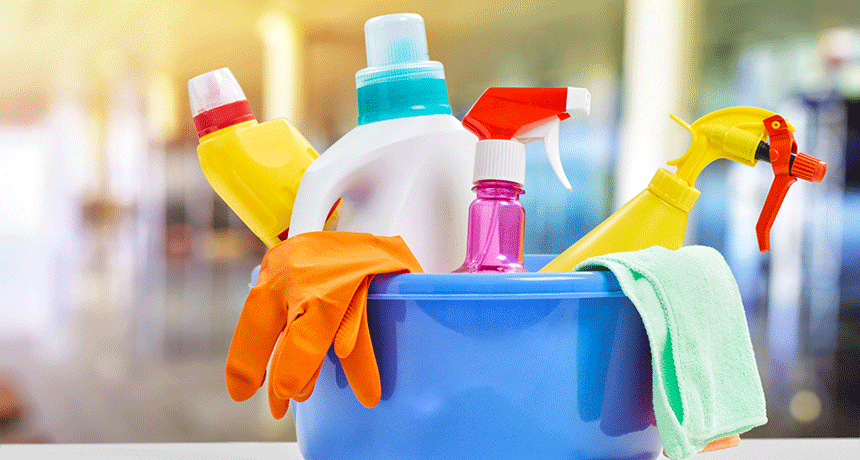Household products can really pollute the air
Cleansers, paints, glues and more spew gases that pose a risk to health and the environment

Everyday products like these emit a bouquet of chemicals that contribute vapors into the air. A spritz of cleanser or spray of some disinfectant will have a small effect. Frequent use of these products by millions of people, however, can really pollute the air.
Choreograph/iStockphoto
AUSTIN, Texas — Families wanting to reduce their impact on air pollution might need to do more than trade in a gas-guzzling car, a new study reports. It found that simple household items also are dirtying urban air. One example: those nicely scented air fresheners.
Paints, cleaning supplies and personal care products (think deodorants and hair sprays) are among common products that send a host of chemicals into the air. These air pollutants — some of them sweet smelling — now contribute as much to lung-irritating ozone and to tiny airborne particulates as does the burning of gasoline or diesel fuel.
It might not seem that way, but the finding is a mark of success, says Brian McDonald. He is a chemist at the Cooperative Institute for Research in Environmental Sciences in Boulder, Colo. He also was an author of the new study. And he shared some of his team’s findings February 15 during a news conference. It took place here, at the annual meeting of the American Association for the Advancement of Science. His group’s data also were published February 16 in Science.
Steps to clean up car exhaust over the past few decades have had a huge effect, says McDonald. As a result, he notes, in cities “the sources of air pollution are now becoming more diverse.”
Spyros Pandis works at Carnegie Mellon University in Pittsburgh, Pa. He’s a chemical engineer who did not take part in the study. “When you have a big mountain in front of you,” he explains, “it’s difficult to know what lies behind it.” Now that big sources (such as traffic emissions) are falling, other sources become more visible.
The new study focused on a class of pollutants known as volatile organic compounds. Most are derived from petroleum or other fossil fuels. These VOCs are hundreds of diverse chemicals that easily evaporate. These gases then may linger in the air.
Some VOCs can be harmful when directly inhaled. Bleach and paint fumes make people lightheaded, for example. But beyond their immediate effects, VOCs also can react in the air with other chemicals. (These include oxygen and nitrogen oxides, largely from vehicle exhaust.) Those reactions can create ozone as well as fine particulates. High levels of fine particulate, tiny dustlike motes, can make it hard to breathe. They also can help foster chronic lung problems, diabetes and heart disease. (And while ozone high in the atmosphere helps shield earth from the sun’s harmful ultraviolet rays, at ground level it mixes with fine particulates to brew up breath-choking smog.
For six weeks, the researchers collected air samples in Pasadena, Calif. This was at a site in the well-known smoggy Los Angeles valley. They also studied indoor air measurements made by other scientists. The team traced the VOCs in these air samples to their original sources. To do this, they used databases showing the particular VOCs released by different household products.
Those household products had an outsized effect on air pollution, the team now reports. By weight, people use about 15 times more gasoline and diesel compared with VOC-emitting goods, such as soaps, shampoos, deodorants, air fresheners, glues and cleaning sprays. Yet those household products were responsible for 38 percent of the VOC emissions, the researchers found. That amount is 6 percentage points higher than the share due to gasoline and diesel use. The VOCs from household products also contributed as much as the fuels did to the production of ozone and fine particulates.
VOC-emitting consumer products
- Shampoo
- Hairspray
- Deodorant
- Perfume
- Air fresheners
- Cleaning sprays
- Laundry detergent
- Disinfectant wipes
- Hand sanitizer
- Glue
- Paint







